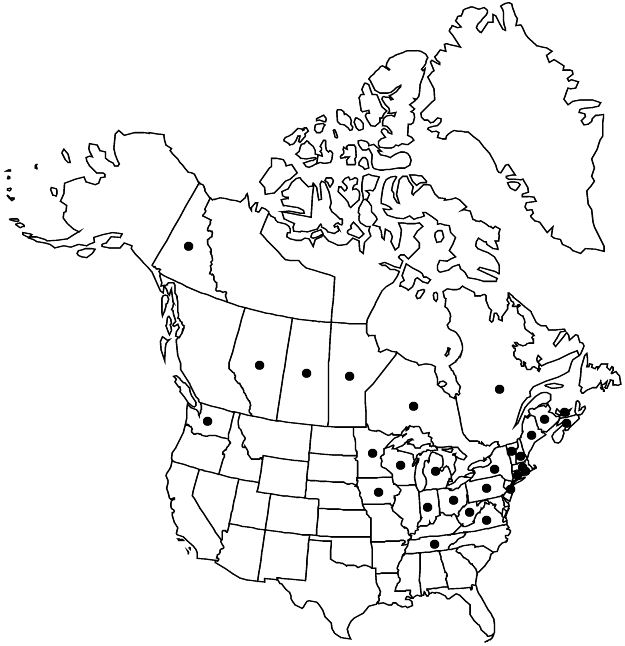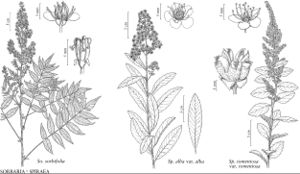Difference between revisions of "Sorbaria sorbifolia"
in P. F. A. Ascherson, Fl. Brandenburg 1: 177. 1860.
FNA>Volume Importer |
FNA>Volume Importer |
(No difference)
| |
Revision as of 20:37, 24 September 2019
Plants 10–30 dm. Leaves: blade 14–30 × 5–17 cm; leaflets (9–)11–21(–29), oblong-ovate to elliptic, (25–)35–75(–95) × (8–)12–20(–25) mm, abaxial surface glabrous or ± sparsely stipitate-stellate, adaxial with some simple hairs near margins, otherwise glabrous. Inflorescences (7–)10–15(–34) × (3–)4–7(–14) cm. Pedicels (and axes) usually puberulent, stipitate-glandular, less often stipitate-stellate. Flowers 10–14 mm diam. (anther tip to tip); hypanthium puberulent, hirtellous, stellate, or glabrous; sepals ovate to oblong-ovate, margins often glandular-serrate; petals ovate to orbiculate, 2.7–4.3 × 2.1–3.4 mm; stamens 20–35[–50], 2–6.5 mm (of variable length); ovaries sericeous, styles 1.3–3.5 mm. Follicles 4.5–6 mm, sericeous. 2n = 36.
Phenology: Flowering Jun–Jul.
Habitat: Roadsides, old fields, waste areas, overgrown forest margins
Elevation: 10–500 m
Distribution

Alta., Man., N.B., N.S., Ont., P.E.I., Que., Sask., Yukon, Conn., Ind., Iowa, Maine, Mass., Mich., Minn., N.H., N.J., N.Y., Ohio, Pa., R.I., Tenn., Vt., Va., Wash., W.Va., Wis., Asia (n China, Japan, Korea, Manchuria, e Siberia), introduced also in Europe.
Discussion
Sorbaria sorbifolia is cultivated in North America and Europe. The plants are always colonial and are capable of becoming adventive.
Selected References
None.
